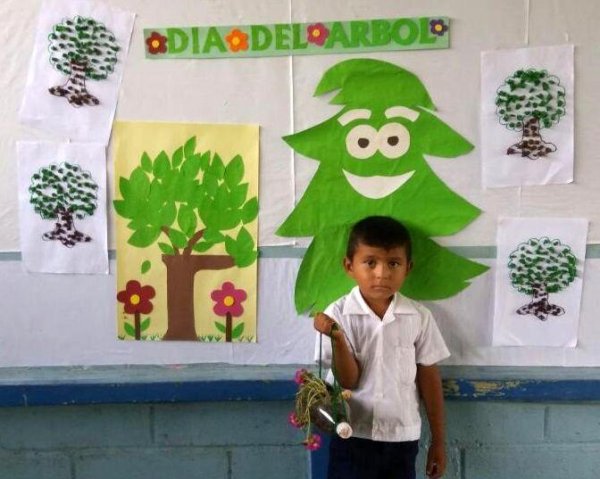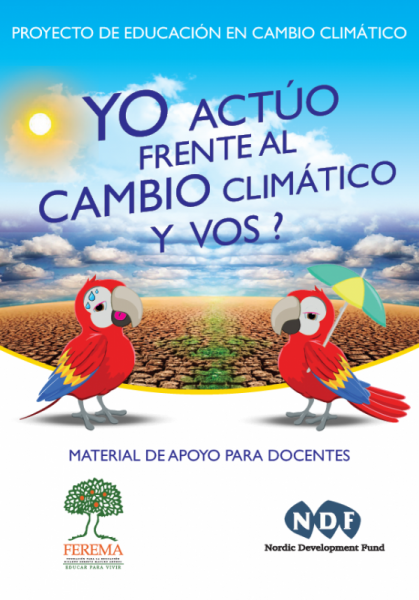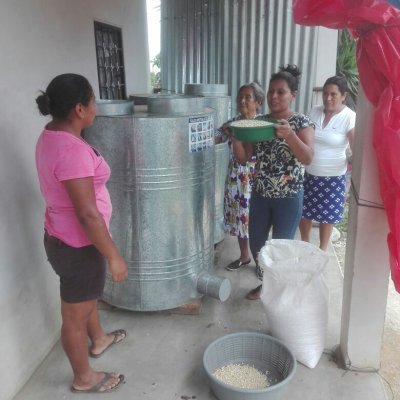Honduran kids ‘Rise Up’ to solve climate crisis in high-energy school program
The NDF-funded education pilot project on climate change for indigenous school children in Honduras has just completed, showing significantly better-than-expected results
The project, known as “Save The Planet Initiative” is part of an ongoing NDF-sponsored Indigenous Peoples, Renewable Energy and Climate Change Program in Honduras and was funded with a USD 740,000 grant from NDF, managed by the IDB, and rolled out locally by the Honduran NGO, FEREMA.
Carolina Maduro, Executive Secretary at FEREMA, recalls: “Our initial plan was to roll out in only 150 schools, but by the end of the two years we had reached 169 schools. Once we got underway, schools started calling us, asking to be part of the project.”
The team found ways to include additional schools while still keeping within budget. As a result, an initially targeted 11,000 students rose to a total 20,853 school children and their communities in 51 municipalities, who were positively impacted by the program.
“And there are still schools calling for the curriculum as well as various local businesses offering to support teacher training and material costs as part of their community involvement,” says Maduro, “so the program looks set to continue under various financing models.”
Locally relevant content
The curriculum for the program was tailored by the FEREMA team for the Honduran school system using ‘Rise Up’ learning materials, developed and tested by the IDB in Uruguay.
“The Spanish language of the materials needed to be adapted for local usage as well as for reading comprehension levels, which differ from those in Uruguay,” Maduro explains. Another requirement, which hadn’t been factored into the original plan, was to adapt the visual materials for local relevance.
As Maduro points out, the four main indigenous groups Lenca, Garifuna, Maya Chorti, and Pech, who were active in the program, have distinctively darker skin than their Uruguayan neighbours. “It might seem like a small thing, but we thought it would be important for the students to see pictures in their booklets of people who looked more like them.”
Maduro, who was active at the frontlines at various stages of the project implementation, describes the design of the curriculum as unique in that it goes beyond classroom learning, motivating students to use their own creativity and energy to tackle environmental problems in their own schools and neighbourhoods.
Green kit a hit
The big draw of the curriculum for getting students engaged is the compelling mega props – colourful visuals and interactive animated videos, touting superheroes saving the world – which resonate with the children and bring the lesson plans alive. Delivering digital props wasn’t always possible. “Internet connectivity is a challenge in many locations,” Maduro laments. But her team overcame this by supplying USB sticks to the schools loaded with the multimedia material. “But then in some remote communities, even electricity was not a given!” Those schools without power were supplied with large poster size laminated flip charts, which teachers could present on picture stands as the next best thing to videos to supplement the lesson plans and summarise the main topic areas.
“These giant-sized pictures in durable booklets were also a real hit with the students,” Maduro enthuses. “In all, 1,456 green kits were distributed to schools during the course of the program.”
High energy, action based
Climate change mitigation and adaptation were the overarching themes of the curriculum’s five teaching modules, which introduced topics such as water conservation, renewable energy, landscape protection, waste management and planting edible school herb gardens.
With two hours set aside per week, schools were able to introduce two modules in the first semester and three in the second, when they were already more familiar with the approach. Activities ranged from separating trash and reusing it for compost, or even original art projects. Used tires were introduced to the school grounds as attractively painted garden borders that also doubled to prevent storm erosion. Generally, the children learnt practical skills while at the same time enhancing their creativity.
The gardens also became a platform to promote healthy eating by adding freshly picked ingredients to school lunches or having the students take produce home for family meals. “Children can go a long way to affecting behavior changes in the communities where they live and we’re seeing signs that the school planting program is helping bring back traditional home gardening,” says Maduro.
On the other hand, the program is breaking with tradition by teaching both boys and girls to work with food and help cook meals.
What about challenges?
Maduro admits the rollout wasn’t always perfectly smooth. For example, at the outset 20 local facilitators were selected for the train-the-trainer course, then tasked with training the 1,258 classroom teachers ultimately involved. These local facilitators also had to monitor and support local implementation as the pilot moved forward. It wasn’t always easy was finding the right caliber of person to fulfill these very important facilitator roles.
“We wanted to create work opportunities for local people from within the target communities,” Maduro points out, “and not just source from outsiders even if they might be more qualified.” Some candidates succeeded really well while others sadly had trouble adapting to the role. Maduro speculates that some simply didn’t have the necessary professional discipline, while others may have been hindered by a lack of environmental know how and training that had been missing from their own education and upbringing.
“Perhaps,” Maduro muses, “the success of this school program will go some way towards addressing this deficit for the upcoming generation.”






